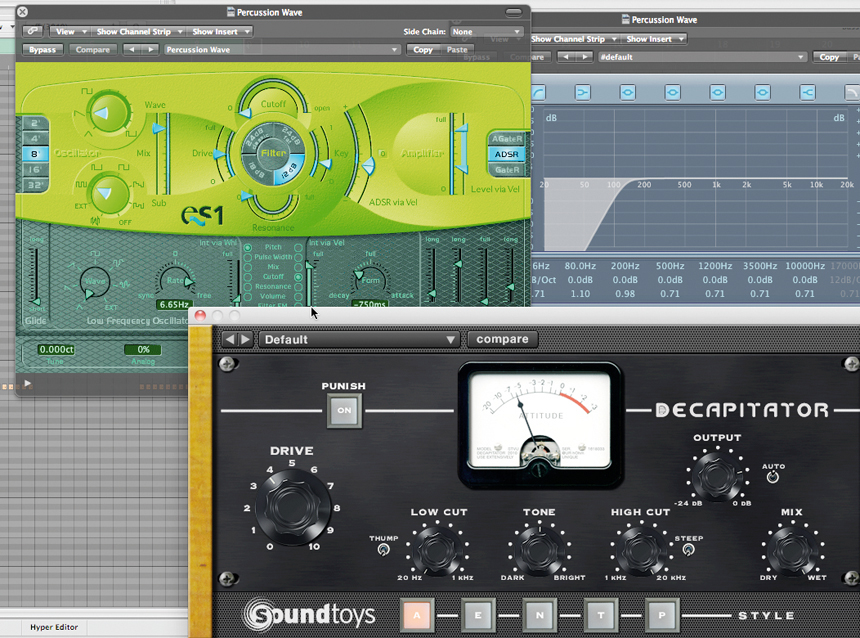How to get the sequence sound in David Guetta's track Without You
Recreate the atmospheric synth hook from the Guetta/Usher hit

David Guetta
David Guetta has become one of the most sought-after producers in Pop today. Having worked with the likes of The Black Eyed Peas, Taio Cruz, Kelly Rowland, Kelis, Flo Rida and many more, he's been responsible for millions of single and album sales, as well as enjoying an increasingly stratospheric career as a DJ.
In this tutorial gallery, we're looking at another collaborative track, Without You, featuring Usher. There are tons of great noises in this mix but we wanted to focus on one which is a staple of Pop-Dance records. We're going to break down the 8th-note sequence which begins the track and which underpins the verse and build-up sections of the song. As ever, let this guide be an inspiration for your own ideas rather than a direct clone of Mr Guetta's own sound!

Pad and filters
Underpinning the 1/8th note sequence is a quiet pad which provides an almost reverb like space to the rhythmic sequence on top which we’ll look at shortly.
This sound is made of three oscillators, which are evenly balanced. Oscillators one and two feature triangle waves, while the third is a square wave. The filter type is crucial, as the thin-ness of this sound comes from a band-pass model, with cutoff a little above the middle to scoop both bass and treble frequencies.
Resonance is set to a generous 40% to create a rich, hollow quality. To enhance the sound, we’re using an insert Filter to band-pass it a second time, adding additional resonance and some distortion to give it a saturated feel.

Layering
On top of the pad comes the first of the two 1/8th note sequences, this one playing the bass note of each chord for two bars each.
We’re using Logic’s ES1 which is a dual-oscillator synth which lets you balance between the first, ‘main’ oscillator and a sub oscillator, detuned an octave below. Oscillator one’s waveform is a triangle, with a pulse waveform for the sub, with the balance set 80/20 in Oscillator one’s favour. Cutoff is set very low to remove most of the brightness from the sound.
Once the part has been played in, its velocities are normalised to create its heavily ‘sequenced’ nature. We’re then using EQ to scoop low frequencies out using a filter below 126Hz and lastly, SoundToys’ Decapitator creates some warm saturation and drive.

EQ and saturation
To enhance the sounds, we’re bussing two auxiliary effects, which are SoundToys’ EchoBoy on Auxiliary buss one and Lexicon’s Vintage Plate on Auxiliary two.
To provide a continuation of the retro, slightly band-passed sound of these parts in combination, we’re using the Telephone algorithm within EchoBoy, which uses the Dual Echo option with quarter-note delay on the left and 1/8th note delay on the right. The Lexicon VintagePlate is using a preset ‘dark’ Instrument Plate to provide a two-second reverb which adds ambience without overloading the top end.
This is important as we don’t want to add masses of sheen to these parts. Both effects are added to the two parts playing 1/8th notes and this helps glue them together. That just leaves us to adjust volume balances and we’re there.

Adding effects
The main sequence sound owes much to the pattern of notes played. David Guetta’s sequence features either a third or fifth sitting atop a pedalling low note which plays throughout on the first, second, fifth and sixth 1/8th notes in each bar and this helps build a sense of harmony.
The sound we’ve made comes from the ES1 again, with the same combination of osc types as in the previous step. This time the cutoff frequency is opened to let through more upper frequencies, though it is still only set at 20%.
The EQ on this sound features two components – a shelf scooping out frequencies below 80Hz and a specific band drop at 265Hz which reduces a narrow band of frequencies by up to 5dB. Again we’re turning to Decapitator to provide some saturation.